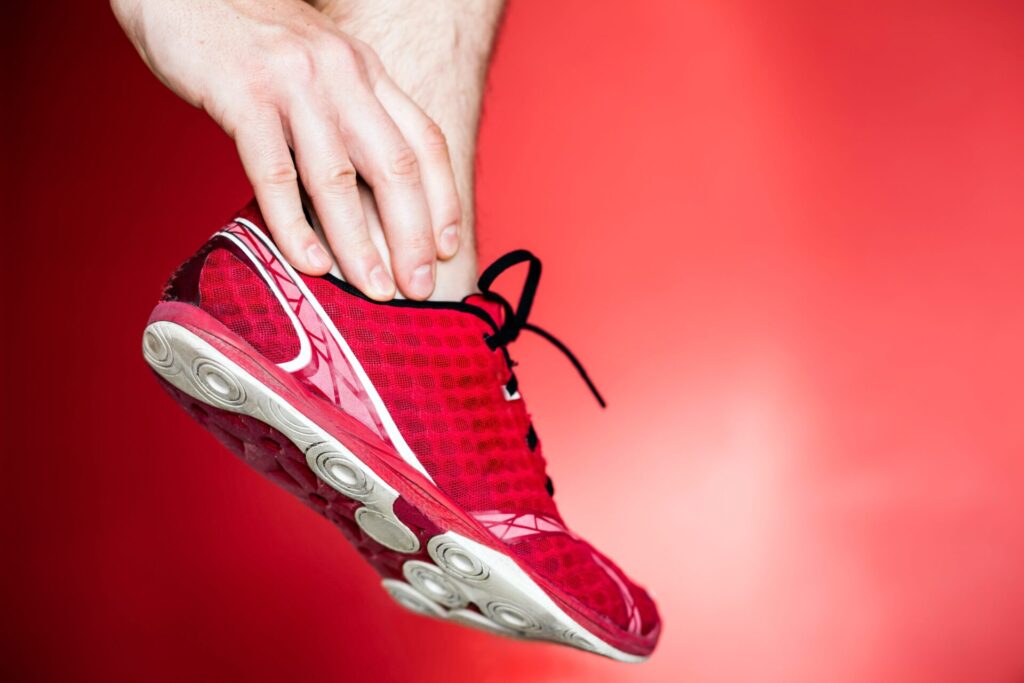Spring Bank Holiday and the Developing Risk of an Achilles Tendinopathy
With the last of the bank holidays this month we can hopefully take time out for ourselves to relax, explore new things or perhaps even go for long walks in nature with the hot weather soon to be arriving now is the time when we are likely to step up our physical activities such as hiking, gardening , golf or undertaking specific sport activities.
We know that these provide us with much physical and mental well-being as well as maintaining healthy body weight, reducing the risk of chronic diseases for example. However, when partaking in these kinds of activities risk of injuries do increase if we have not taken the appropriate training and / or warm up programmes.
One such activity almost like salt and pepper that also go hand in hand is our achilles and running.
Our achilles tendon (AT) located in the back of your calf attaches to our heel bone.
It is the thickest and strongest tendon in the human body. As the tendon turns 90 degrees medially on its path towards the heel a contraction of the gastrocnemius and soleus muscles (calf muscles) creates the foot to bend in a downward motion, (plantar flexion) via the AT. The Achilles allows us to walk and push through propulsive actions like running and explosive motions like jumping.
Whether we’re running, jumping, or walking, our AT bears the brunt of the load, making it more susceptible to injury. Or perhaps you are a newbie in a particular sport and you haven’t taken the provisions of spending time to develop strength being the ‘weekend warrior’ type . This does increase our injury risk at the Achilles and foot/ankle generally.
An Achilles tendinopathy (where the tendon becomes damaged) is very common. We can experience degeneration, inflammation, and pain.
Achilles tendinopathy is an umbrella term for a type of overuse injury and found commonly in younger people. However, it can affect anyone who puts excessive strain on the Achilles tendon.
Recognizing the symptoms
The early signs of Achilles tendinopathy may include mild pain and stiffness in the back of the heel or lower calf, which tend to worsen during physical activity. As the condition progresses, the pain may become more persistent, leading to aching and swelling in the affected area. Ignoring these symptoms can exacerbate the condition.
After each injury, the tendon does not heal completely, as should normally happen. This means that over time, damage to the Achilles tendon builds up and Achilles tendinopathy can develop as well as its sheath called a tenosynovitis where it can now become more recalcitrant (stubborn).
Here are some factors that may lead to these repeated tiny injuries to the Achilles tendon:
- Overuse of the Achilles tendon. This can be a problem for people who run regularly – as depressing as this is, we do advise to stop running until full resolution has taken effect. As well as ballet dancers, high level tennis players and/or other sports that involve jumping and sudden pivot movement changes.
- Wearing inappropriate footwear. Very hard heel counter shoes, very flat shoes or too old shoes (*in particular a question for runners – Are you trainers over 9 months old? Ideally we now need a new pair to be able to absorb the amount of forces required per running gait cycle).
- A poor training or exercising technique – have you had your running style professionally assessed?
- Making a change to your training programme – for example too rapid increments /intensity of training, not enough rest or even too much rest.
- Training or exercising on excessively hard surfaces.
- Poor nutrition
Achilles tendinopathy is also more common in people who have certain types of arthritis, such as ankylosing spondylitis or psoriatic arthritis or reiters. It is also thought that your genetic ‘makeup’ (the material inherited from your parents), plays a large role in who may or may not develop an Achilles tendinopathy. It is also more common in people who have high blood pressure, high cholesterol or diabetes.
Managing Achilles Tendinopathy
- Rest and Modify Activities. It’s essential to allow the tendon time to heal by reducing or modifying activities that exacerbate the pain.
- Ice and Heat Therapy. Applying ice packs to the affected area can help reduce inflammation and alleviate pain. However, heat therapy can improve blood circulation and promote healing.
- Footwear and Orthotics. Orthotic inserts or heel lifts may be recommended to improve foot alignment and reduce stress on the tendon.
- Medications and Injections. Over-the-counter pain relievers may help manage pain and reduce inflammation. In severe cases, a podiatrist might suggest PRP/GOLDIC THERAPY.
Early recognition of this injury, proper rest, and a comprehensive rehabilitation program will play crucial roles in the recovery.
Engaging in well balanced 3-4 times a week exercise can significantly improve our overall health and well-being. Hence, regular exercise can have a big impact on our health. It can lower the likelihood of having a heart disease, stroke, type 2 diabetes, some types of cancer and other diseases. However, even more important than regular exercise is our food intake. It is estimated from a recent PHD nutrition colleague we spoke with that 80% of fitness alone is down to a healthy balanced diet.
Are you suffering from any foot or nail condition? At The Chelsea Clinic, we can help. One of our podiatrist can assist and then recommend what treatments are best to get you back on track.  Podiatrist South Kensington
Podiatrist South Kensington
Schedule an appointment here or you may call us at +44 (0) 207 101 4000. 
We hope you have a Achillestastic day! 

-The Chelsea Clinic and Team


 Podiatrist South Kensington
Podiatrist South Kensington




